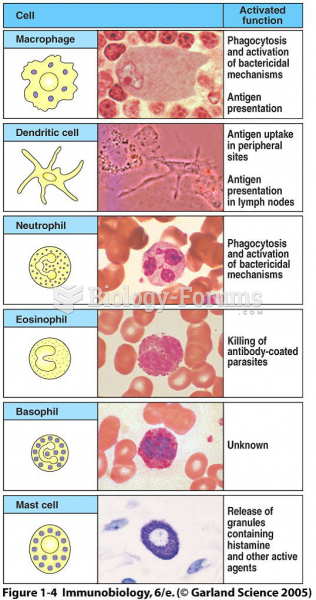|
|
|
On average, the stomach produces 2 L of hydrochloric acid per day.
Only one in 10 cancer deaths is caused by the primary tumor. The vast majority of cancer mortality is caused by cells breaking away from the main tumor and metastasizing to other parts of the body, such as the brain, bones, or liver.
The Centers for Disease Control and Prevention has released reports detailing the deaths of infants (younger than 1 year of age) who died after being given cold and cough medications. This underscores the importance of educating parents that children younger than 2 years of age should never be given over-the-counter cold and cough medications without consulting their physicians.
Prostaglandins were first isolated from human semen in Sweden in the 1930s. They were so named because the researcher thought that they came from the prostate gland. In fact, prostaglandins exist and are synthesized in almost every cell of the body.
The types of cancer that alpha interferons are used to treat include hairy cell leukemia, melanoma, follicular non-Hodgkin's lymphoma, and AIDS-related Kaposi's sarcoma.
 Hemodialysis. The process of hemodialysis replaces the kidney function of blood filtration by forcin
Hemodialysis. The process of hemodialysis replaces the kidney function of blood filtration by forcin
 Model of malaria protozoa in a red blood cell. New parasites are produced and mature in the RBC, ...
Model of malaria protozoa in a red blood cell. New parasites are produced and mature in the RBC, ...





